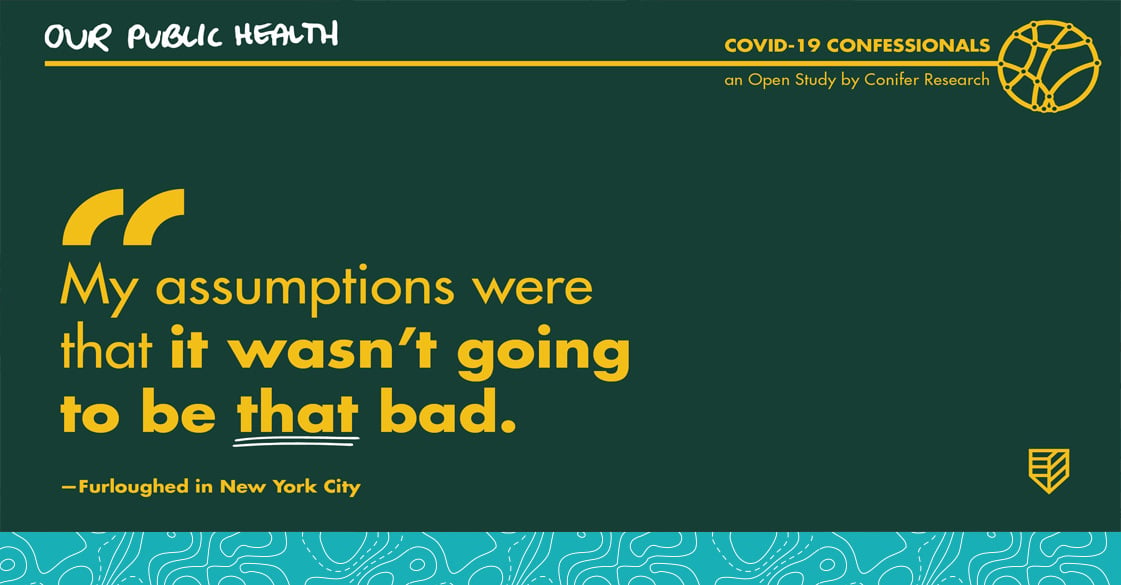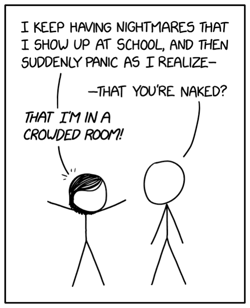
COVID-19 & Culture Changes

The efforts to mitigate COVID-19 continue, and the world is collectively finding different ways to adhere to the rules of social distancing. For the first time in the modern era, people across the globe are sharing a collective experience of figuring out how to adapt. As anthropologists, it should surprise no one that we have a lot to say on adaptation and cultural changes. Our lives’ work is morphing in front of us, yielding a rich landscape full of new questions, emerging behaviors, shifting priorities, and more.
In many ways, the restrictions and conditions of stay-at-home orders mimic a giant and global deprivation study. At Conifer, we are researchers interested in how people are navigating their daily lives in this time of change and what they are doing to adapt. In particular, three behavior changes stand out to us — they are each born of shared goals and needs, but differ in approach based on culture and context. We believe these changes are powerful levers to consider as we collectively move through the rest of this pandemic.
1. Evolving Ideas of Personal Space and Boundaries
(Recurring Nightmare from XKCD.com)
 Precautions around physical contact are redefining fundamental rituals of human interaction as we see changes in how we greet strangers and acquaintances. Handshakes, once a reflexive gesture of friendliness, are being replaced by practical (and sometimes humorous) alternatives such as the Wuhan shake and the elbow bump.
Precautions around physical contact are redefining fundamental rituals of human interaction as we see changes in how we greet strangers and acquaintances. Handshakes, once a reflexive gesture of friendliness, are being replaced by practical (and sometimes humorous) alternatives such as the Wuhan shake and the elbow bump.
Any levity surrounding the adoption of these once-absurd gestures has been dampened by a general weariness of our new reality. As Dr. Anthony Fauci states in a recent podcast, “I don’t think we should ever shake hands ever again, to be honest with you.” As six feet apart becomes the new norm, we have to wonder if perhaps the handshake will become a more intimate form of greeting, a symbol of trust more comfortably shared amongst close friends and family.
Fear of crowds and large gatherings may also forever be embedded in our consciousness. Public outings we took for granted in the past now require careful planning. As a participant in our COVID-19 Confessionals study observes, a quick run to the grocery store is not as simple as it used to be: “It has been such an ebb and flow between freaking out in an overcrowded super markets when you have run out of things and can't wait a week for delivery to a more relaxed quality time with family at home.”
Personal and professional spaces are blurring together as workplaces learn to adjust their workflows to be more suitable for remote work. Work from home will become increasingly commonplace in the future, decreasing the need for long commutes and relieving strain on transit infrastructure. Virtual workspaces have also given us a peek into each other’s homes as children and pets roam in the backgrounds (and foregrounds) of remote meetings. Our most intimate spaces have become the backdrops for Zoom calls, loosening and expanding our expectations of business etiquette and ideas of “professionalism.” Work as we know it is getting a double-dose of humanity.
2. Nostalgia is a Source of Comfort During Times of Stress
Since widespread social distancing began, we’ve found ourselves longing for the past — not only for the simple luxuries of our pre-coronavirus world, but also for content and memories from when we were younger. During these stressful times, we are embracing this feeling of nostalgia and letting it guide us back to spaces of comfort and escape.
From the Backstreet Boys to the original cast of High School Musical, celebrities of the 90s and early 2000s have reunited virtually to repopulate our feeds with familiar content. Social media users are embracing these throwbacks to simpler times and reinforcing the trend with #tbt tags and the “me at 20” Twitter challenge.
Nostalgia, while comforting, can also be a jarring reminder of our past “normal.” Instagram’s “on this day” feature, for example, lets users clearly visualize where they were and what they were doing one year ago, emphasizing stark contrasts to their current situation.
As Amanda Hess, a New York Times author observes, “It’s not so much that I miss my childhood as that I feel seized by it. It’s a memory for my mind to visit when my body can’t go anywhere else, and a vain attempt to grasp control over my surroundings.” Perhaps our natural response to tragedies and large disruptive events is to draw upon these feelings of nostalgia. This shared sentiment is a force to be reckoned with, one that will continue to influence our interactions and decisions as consumers for years to come.
3. The Legacy of COVID-19 on Public Health Infrastructure
Public health is often taken for granted, especially because we are used to the annual ebbs and flows of the flu season and other regular, expected illnesses. The pandemic has been a wake up call for consumers, bringing discussions about public health front and center. It has also pointed out glaring differences in response strategies across the world, highlighting the importance of cultural and community preparedness in successfully managing a public health crisis.
In various parts of Asia, mask wearing as a preventative public health measure had already been common practice, largely in part due to generational trauma experienced during the SARS outbreak in the early 2000s. In the United States and many other parts of the world, this has not been the norm — mask wearing was primarily reserved for healthcare professionals. However, evolving definitions of health hygiene from the CDC and state government recommendations have increased mask use among Americans, in addition to extensive news coverage of ongoing shortages of personal protective equipment, that has prompted many to make their own masks.
It is becoming more common for grocery stores, public transportation vehicles, airports, and other public spaces to provide sanitizing wipes for customers. It seems likely that providing cleaning supplies such as wipes and hand sanitizer in public spaces will become standard business etiquette in the future. We may find that the legacy of COVID-19 normalizes a culture of mask-wearing, similar to in parts of Asia. In any case, our increased collective awareness of the importance of prevention of disease transmission will bring about new standards of hygiene practices.
Just as past outbreaks have laid the groundwork for our present-day public health practices — routine childhood vaccines like measles, mumps, and rubella are requirements of public health school enrollment — our experience with COVID-19 will likely introduce new health care policies and structures. For instance, the COVID-19 vaccine, if successfully developed and distributed, may be added to this list of required vaccines for participants of public spaces (such as school, working in healthcare, or other high risk areas). It could also be prescribed as a seasonal vaccine like influenza, or included in yearly testing and screening procedures (such as with tuberculosis — another insidious and contagious respiratory illness) required by most healthcare spaces. We also expect to see changes at the human resources and workplace safety levels as we all carry forward new definitions of “risk” “safety” and “protection.”
When this pandemic ends, our world will undoubtedly look very different — already our very understanding of what is ‘normal’ is being redefined regularly. Rituals we have learned and baked-in behaviors we are leaving behind will reimagine our ideas of society as we know it. The new wave of consumers and community members that will emerge from this crisis are worth paying close attention to.
Read on for more reflections on all things COVID-19 pain points, culture shifts and changing consumer behavior. 
